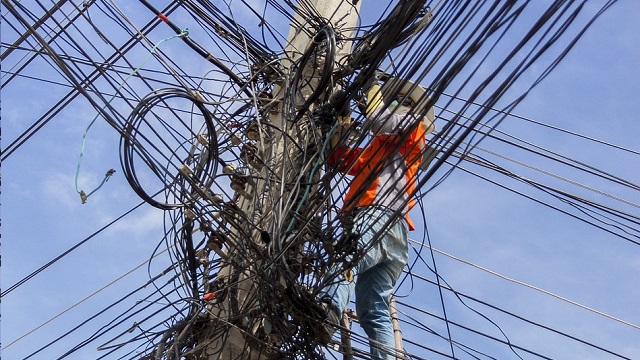
From your neighborhood Starbucks to the Senate session hall, Tuesday's rotating brownouts in Luzon spared no one. The National Grid Corporation of the Philippines, the operator of the power grid, has been serving advance warnings in the last few days—but with barely enough time to prep in this confused weather (Read: heat and rain combined).
For June 1, Tuesday, alone, the National Grid Corporation of the Philippines (NGCP) placed the Luzon grid under red alert for 11 hours, from 10:01 a.m. to 5 p.m. and 6:01 p.m. to 10 p.m. This could persist until June 7, the NGCP said.
There will be discomfort from the heat and inconveniences—or relief, to be honest—from disrupted MS Teams or Zoom calls because of the rotational power outages for the next few days. On a more serious note, this could disrupt cold storage for COVID vaccines that require electricity, said Senator Sherwin Gatchalian, the Senate energy committee chairman.
Gatchalian demanded an explanation from the Department of Energy for the brownouts, tweeting that "They should explain why their projections are off!"
[facebook:https://ift.tt/2SMef0q]
Why are these power outages happening?
Simply put, power outages—a.k.a. brownouts—happen when the power supply is not enough to meet the demand.
The Department of Energy (DOE) said that the high heat index pushed the demand for power. Unscheduled outages at Luzon power plants contributed to the dwindling supply. Ageing power plants, which malfunction frequently, are also to blame.
When this happens, the privately owned NGCP, which links power generators to distribution utilities, announces alert notices:
- White alert means there is sufficient supply
- Yellow alert means power reserves are low
- Red alert means power is insufficient, resulting in rotational brownouts or manual load dropping
What is being done to avoid power shortages?
There are short-term solutions. Those at home are requested to be more energy efficient, by unplugging appliances when not in use, clean fans and air conditioners frequently to ensure unimpeded airflow, use compact fluorescent lamps or LED bulbs, and defrost the refrigerator when the ice in the freezer reaches 1/4 inches thick.
[facebook:https://ift.tt/3p89B9f]
Meralco also has an interruptible load program, where big businesses with generator sets will be alerted to switch on their gensets when NGCP fires off red alert notices. This gives room for more energy supply for residential areas customers, lessening the likelihood of rotational brownouts.
There are also long-term solutions.
The Luzon grid, which generates the most power compared to the Visayas or Mindanao grid, experiences a deficit when the demand exceeds the supply. According to officials, at least 400 MW is needed as reserve to prevent rotational outages.
To build reserves, more power needs to be produced. There are power supply agreements pending with the Energy Regulatory Commission, Meralco said. If approved, this means more power plants to be built and an increase in energy generation.
Currently, the Luzon and Visayas grids are interconnected. In 2018, the Mindanao-Visayas Interconnection Project was launched to connect the three power grids into one unified grid, the NGCP said. Once complete, it could help deliver excess capacity from the Mindanao grid to Luzon grid.
It was supposed to be completed by December 2020, but COVID-19 travel restrictions and damaged fiber optic submarine cables have hampered its completion.
[ArticleReco:{"articles":["86347","86350","86361","86352"], "widget":"Hot Stories You Might Have Missed"}]
Hey, Spotters! Check us out on Viber to join our Community and subscribe to our Chatbot.
We are now on Quento! Download the app and enjoy more articles and videos from SPOT.ph and other Summit Media websites.
Source: Spot PH
No comments:
Post a Comment